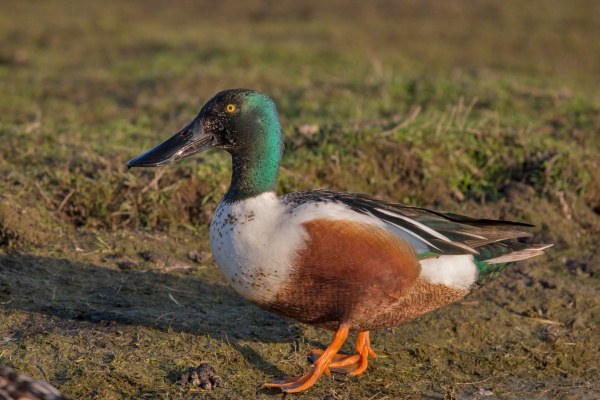Facts About Northern shoveler
The northern shoveler, often simply referred to as the shoveler, is a widely distributed duck species found across Europe, North America, and various other regions around the globe. This bird breeds in the northern areas of Europe and the Palearctic region, migrating to warmer places such as southern Europe, Africa, the Indian subcontinent, Southeast Asia, the Caribbean, and northern South America for the winter. Occasionally, it even appears as a rare visitor in Australia.
In North America, the shoveler breeds from the southern edge of Hudson Bay down to the Great Lakes and extends westward to states like Colorado, Nevada, and Oregon.
The northern shoveler was first described by Carl Linnaeus in 1758. It belongs to the genus Spatula, with no currently recognized living subspecies. Interestingly, fossils of a similar duck have been discovered in Turkey, but their relationship to the modern northern shoveler remains unclear.
One of the most distinctive features of the northern shoveler is its large, spoon-shaped bill. Male shovelers in their breeding plumage are particularly striking, with an iridescent dark green head, a white chest, and a chestnut belly. Females, in contrast, have more subdued mottled brown feathers. These ducks are dabblers, feeding primarily on plant material by skimming the water's surface. Their specialized bills also enable them to scoop up aquatic invertebrates.
Shovelers prefer habitats such as mud-bottomed marshes for feeding and grassy areas away from open water for nesting. During the breeding season, males are notably territorial and are known for their elaborate courtship displays.
These ducks are typically found in open wetlands with ample emergent vegetation. They breed across Eurasia, western North America, and the Great Lakes region. Come winter, they migrate to warmer climates in southern Europe, Africa, the Indian subcontinent, the Caribbean, and South America.
The northern shoveler is a strong migratory bird, and its population has been thriving and even increasing in recent years. Unlike some other duck species, shovelers are not very social and usually remain in small flocks. In North America, they are among the most common ducks, with populations exceeding 5 million birds.

 Egypt
Egypt